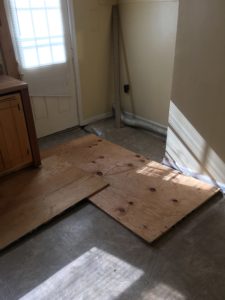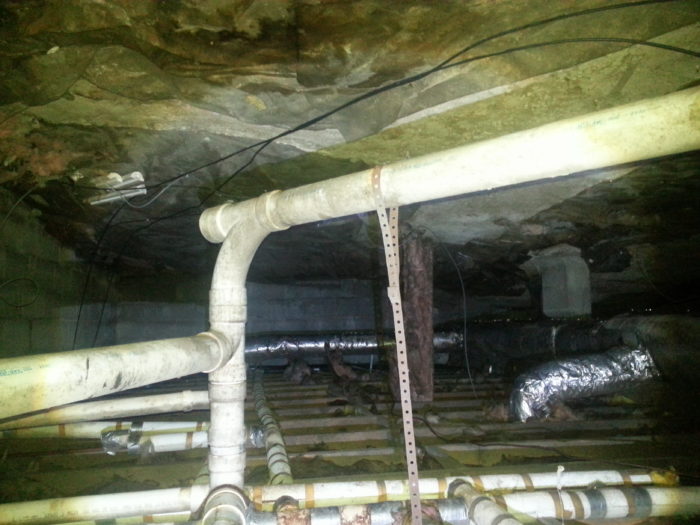Everyday, home builders are creating products for families that scientifically — Don’t even make sense! It is quite possible this is one of the largest oversights of the modern-day construction industry. Okay, okay, enough with the headlines. What’s going on?
In our area of the nation, it is estimated (as of 2013) that 19% of homes are built on a crawl space foundation. This style of foundation is commonly used as an alternative to basements to cut costs. Much less digging and materials is required, allowing a builder to increase net profits. It typically includes a block foundation with 1- 4 feet of height from the dirt floor to the floor joists, whereas a basement is at least standing height, and often on concrete slab. A crawl space is virtually a basement that’s much shorter, right?
But it’s the strangest thing. Builders, and even building codes, treat the air in the crawl space entirely differently. As a result, they are destined to fail. Perhaps builders don’t realize it, or perhaps they don’t care, but regardless, foundation and basement contracting companies are making a living off of this critical flaw.
The #1 flaw of the crawl space design is the block vent.
Let me explain. Moisture is the root of nearly all evil when it comes to houses. Yes, water. Rainwater leaks under shingles and rots wood until it makes it’s way to the finished area of your house. Rainwater on the ground erodes soil away from your houses foundation, causing it to shift and crack. A Plumbing leak causes all the wood in the walls/floors/etc to start to rot. Even most insect problems such as termites can be traced to moisture issues! The list goes on.

But the most relevant moisture problem to our discussion is water in the air under your house. When there is standing water in your crawl space or basement, it invites bigger issues. Foundation shifting, termites, fungal growth, etc. Thus, a big job of the crawl space is to maintain a low-humidity atmosphere. Contractors, builders, and city codes alike generally agree that 55% humidity or less is acceptable.
The flawed perception of how air works is exemplified by installing vents in the foundation block every so many feet. It is believed that as long as air can come and go, there won’t be any stagnant humidity or moisture in the crawl space. This should prevent any problems with your house, right?
Wrong. Especially in the warmer 8 – 9 months of the year! Warm air is able to hold more moisture than cold air. This is called its relative humidity. Warm air outside may be at a pleasant 50% humidity, but when it breezes into your cold crawl space, the RH jumps up. Often times, it can be such a temperature difference that moisture in the air condensates to surfaces in your crawl space. A wet, humid mess indeed!
This is only where the problems begin. Soon, insects will take over, such as termites. Fungi grow on the damp surfaces. As much as 50% of the air you breathe on the first floor of your house is air from the crawl space. Perhaps it’s not the cat that has been giving you allergies lately!
If it is shocking to you that homes are built by the masses with a design seemingly unaware of how relative humidity works with different air temperatures, rest assured it shocks me, too!
If you are looking for a home to buy, keep this in mind. Most crawl spaces will cause you problems later. The current solution is crawl space encapsulation. If you would like to learn more, reach out to Frontier Basement Systems. They’ll send you a free book to educate you on how foundations should work and shouldn’t work! I’m a fan of Frontier (if you have the budget for the highest-quality product and service).

To stay current with useful articles like this one, drop your info in the small form in the right-hand sidebar. —>
